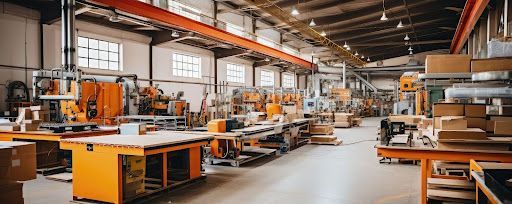Comprehensive Security Strategies for Modern Manufacturing Operations
July 18, 2024

In a world where manufacturing operations face constant threats from theft, sabotage, and other security risks, the importance of a comprehensive security strategy cannot be overstated. From the moment raw materials enter a facility to the time finished products are shipped out, a wide array of security measures must be in place to protect both assets and employees. This discussion highlights the critical components of security in manufacturing operations, focusing on inventory control systems, perimeter protection, and internal surveillance methods.
Inventory Control Systems
Effective inventory management is more than just keeping track of products; it serves as a crucial part of a facility’s overall security strategy. Advanced inventory control systems integrate with other security measures to monitor the flow of materials and products in real time. By using technologies like RFID tags and barcodes, manufacturing facilities can track every item’s movement throughout the production process. These systems help in detecting discrepancies that might indicate internal theft or mismanagement. Furthermore, inventory control technology can also feed data directly into security monitoring systems, ensuring that any unauthorized access or unusual activity triggers an immediate alert.
Perimeter Protection
The first line of defense in a manufacturing facility’s security plan involves securing its perimeter. Effective perimeter protection starts with physical barriers such as fencing, gates, and barriers that are designed to prevent unauthorized access. Beyond these barriers, security cameras and motion detection systems play a pivotal role in monitoring and recording activities around the clock. Integration of advanced technologies, like thermal imaging and facial recognition, enhances the capability to detect and respond to intrusions or other irregular activities.
Lighting is another critical aspect of perimeter security. Well-lit areas tend to deter potential intruders because they increase the likelihood of being seen and caught. Strategic placement of lights around the facility’s boundary and at all entry points reduces shadows where thieves could hide.
Internal Surveillance Methods
Within the walls of the manufacturing plant, surveillance is key to maintaining a secure environment. CCTV cameras installed throughout the facility help monitor all internal operations, keeping an eye on sensitive areas such as high-value inventory storage rooms and access points to critical infrastructure. The location and angle of these cameras are crucial for eliminating blind spots, thus enhancing the overall effectiveness of the surveillance system.
Access control systems further secure sensitive areas within the facility. Techniques like key cards, biometrics, and PIN codes ensure that only authorized personnel can enter specific parts of the building. These systems not only prevent unauthorized access but also log entry and exit times, providing a record that can be invaluable in investigating discrepancies or incidents.
Cybersecurity Measures
As manufacturing becomes increasingly digitized, cybersecurity has become an essential component of a comprehensive security strategy. Protecting data related to operations, employees, and business intelligence from cyber threats is critical. Firewalls, intrusion detection systems, and regular cybersecurity audits help protect against potential cyberattacks that could disrupt manufacturing operations or lead to data theft.
Employee Training and Security Protocols
Employees play a vital role in maintaining a secure environment within manufacturing facilities. Regular training sessions should be conducted to educate employees on the importance of security protocols and how to respond to security threats. This training includes recognizing suspicious behavior, understanding the company's emergency procedures, and accurately reporting incidents.
Manufacturers must also establish and enforce strict security policies regarding visitor access and delivery protocols. By having clearly defined procedures for checking in visitors and accepting deliveries, facilities can minimize the risk of unauthorized access.
Collaborative Security Efforts
Collaboration between internal security teams and local law enforcement can enhance the effectiveness of security measures. Sharing information about potential threats and security breaches may prevent incidents or help in quicker resolution if they occur. Regular meetings and training sessions with local police and fire departments can lead to improvements in emergency response times and effectiveness.
Manufacturing facilities face unique challenges in maintaining robust security. Each layer of security from perimeter defenses to internal controls and cybersecurity measures plays a vital role. By continually assessing and updating these security strategies, manufacturers can protect their operations from a variety of threats, thereby ensuring the safety of their assets and employees. Video surveillance, controlled access, and employee training form the foundation of a secure manufacturing operation, safeguarding against both internal and external threats.
Ready to fortify your manufacturing operations against threats both digital and physical? We have you covered. Don’t wait for a breach to happen. Contact us today to learn how we can safeguard your manufacturing processes for a secure, productive tomorrow.
Request Your Appointment Today
Contact Us
We will get back to you as soon as possible.
Please try again later.
Provo Shop:
224 S 500 W
Provo, UT 84601
Lehi Office:
2940 W Maple Loop Dr #L07
Lehi, UT 84043
Mon-Fri 8:00am - 5:00pm
Sat-Sun By Appointment Only
